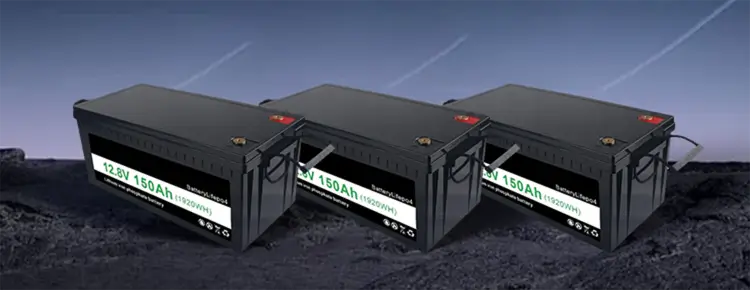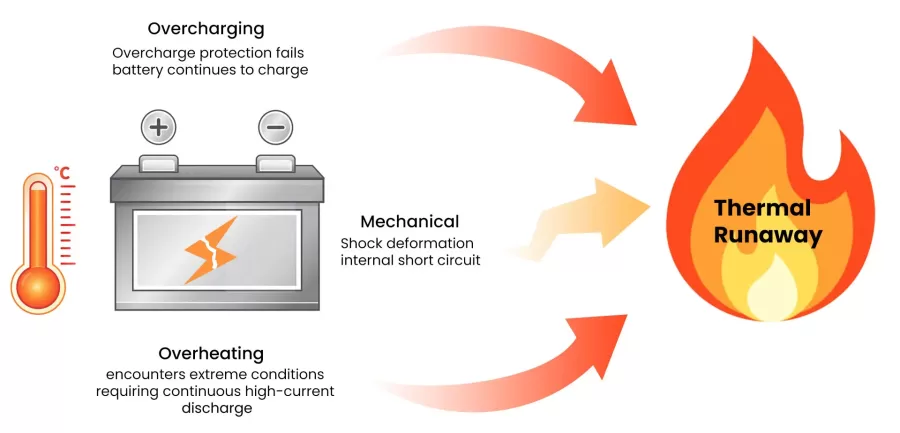



Blog
Hot Category
Latest Blog
19 Jun 2025
Nlelsen
Hello everyone, I am Nelson, the editor of YDESS website. For mobile power, transportation has always been a big problem. In fact, it is not just mobile power that is troublesome to transport, but all products containing medium and large batteries are very troublesome to transport. So, let me explain in detail from different perspectives why it is so difficult and costly to transport products containing batteries.

Lithium-ion/lithium metal batteries (commonly found in mobile phones, power banks, portable power supplies, etc.) are the focus of international transportation control. This type of battery has a high energy density. When short-circuited, overheated, squeezed or damaged, it may cause a chain reaction of internal short circuit → heat accumulation → electrolyte decomposition → flammable gas release → combustion or even explosion.
For example, a damaged lithium battery may cause thermal runaway during transportation due to temperature rise (such as high temperature environment in the cargo hold) or physical collision, which may ignite surrounding cargo and may cause a fire in the entire aircraft/ship in severe cases.
The electrolyte in the battery usually contains organic solvents (such as carbonates) and lithium salts (such as lithium hexafluorophosphate), which are highly corrosive; some battery materials (such as lead and cadmium in lead-acid batteries) also contain heavy metals, which can cause harm to the human body and the environment if leaked.
If the packaging is damaged during transportation, electrolyte leakage may corrode other goods, the internal structure of the transportation vehicle, and even pollute the port or airport environment.
To reduce transportation risks, major international organizations and countries around the world have formulated strict battery transportation regulations, which have high compliance costs and complex operations:
The United Nations "Recommendations on the Transport of Dangerous Goods" (UN TDG): lithium batteries are classified as Class 9 dangerous goods (miscellaneous dangerous substances and articles), and clearly require that packaging, marking, documents, etc. must comply with specific standards.
The EU requires battery products to comply with CE certification (such as EN 62133 safety standards) and be marked with the CE mark; the United States requires UL certification (such as UL 1642 for lithium batteries), and some states have additional regulations on battery recycling.
Some countries (such as the Middle East and Southeast Asia) may impose high tariffs on battery imports or require localized testing, further increasing the difficulty of customs clearance.

Lithium batteries must use UN-certified anti-static and anti-short-circuit packaging, or make special dangerous goods packaging, and must be marked with warning labels such as "flammable", "upward placement", and "no squeezing".
Air transport: Most airlines implement "limited exemptions" for lithium battery transportation (such as only allowing a small number of retail-packaged batteries per shipment), which is expensive, and prohibits the transportation of damaged, recalled or safety-defective batteries. Some airlines even completely refuse to accept lithium battery cargo.
Sea transport: Dangerous goods information must be declared to the shipping company in advance, and the goods must be stored in a special space under the deck (away from heat sources such as the cabin and boiler), and fire-fighting equipment (such as carbon dioxide fire extinguishers) must be equipped.
Land transport: The EU requires that cross-border lithium battery vehicles must be equipped with fireproof packaging and temperature monitoring equipment, and some countries prohibit the transportation of large-capacity batteries by road.
Complete dangerous goods transportation documents (such as UN38.3 test report, MSDS chemical safety data sheet, transport appraisal), as well as regular documents such as certificate of origin and commercial invoice are required. If the documents are incomplete or do not meet the requirements, the goods may be detained or returned.
Some countries require battery products to be registered in advance (such as China Customs' "battery product import registration"), which increases the time cost.
Ordinary freight forwarders usually do not have the qualifications for dangerous goods transportation, and need to choose special dangerous goods logistics service providers. There are few such service providers and the freight is 30%-50% higher than ordinary logistics.
If lithium batteries are mixed in the sea freight LCL (LCL), the whole container may be rejected due to non-compliance of other goods; air transportation requires booking flights with dangerous goods transportation qualifications in advance, and the space is tight and expensive.
So the difficulty of international transportation of battery-containing products is essentially the result of "high risk + strong supervision":
Risk side: The chemical instability of batteries determines that they are prone to fire, explosion or pollution;
Regulatory side: International regulations set up layers of checkpoints to reduce risks, and strict compliance is required from production standards to transportation operations;
Cost side: Special packaging, professional logistics, certification documents, etc. have pushed up transportation costs and time costs. So if you are going to import or export some battery-containing products, you must plan in advance. First of all, you must ensure that your products must have all the certifications and tests required for lithium battery transportation. You also need to prepare enough freight, because this freight will be much higher than ordinary goods. And pay close attention to changes in regulations in various countries to complete cross-border transportation efficiently and safely.